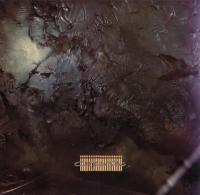Cocteau Twins "Head Over Heels" Reissued by 4AD
The Scottish duo of vocalist Elizabeth Fraser and guitarist Robin Guthrie created this icy (but not at all harsh), reverberant production not accidentally but obviously intending listeners to get lost in thickets of crystalline strands produced by Guthrie's chime-like guitars and Fraser's distant difficult to decipher wailings. Everything in the mix of drums, guitars, vocals and hazy effects is drenched in reverb.
It is production taken to an extreme that you either love or wish you could hang out to dry for a few hours. After hearing "Sugar Hiccup" I think on KROQ in Pasadena, CA, I immediately went out and bought the album either at Aron's or Rene's on Melrose Avenue. After a painful breakup It was exactly to where between my Spica TC-50s I happily retreated.
Admittedly it's not been on the turntable for quite some time so when this reissue cut from a "high resolution digital file" arrived, I paid a visit to the original (pressed at French MPO) and enjoyed the trip back in time and echoey "fun house" space.
Then I played the reissue. One of these records is "right" and one is "wrong". They both can't be right. First of all the bass on the reissue is far more robust and muscular. That often happens on reissues where the original's bottom end was purposely shelved to make sure the record would play on the turntables kids owned at the time. That's why The Beatles' mono box set cut from analog tape features much better bass. It's not that Sean Magee added bass. It's that Harry T. Moss "shelved" it for the originals.
So here, more bass isn't surprising and it's welcome. However, the top end where all of the ethereal "space" and crystalline three-dimensionality resided is pretty much gone. Not only is the top end extension less expansive, all of the soundstage depth and width has been pressed into a flat pancake that produces more mundanity and less mystery. The "spacey" environment into which a listener could immerse him or herself no longer exists.
At the same time it's true that you can now more easily pick out the individual elements put into the mix and Fraser's voice, which formerly floated ghost-like in the backdrop is now more up front. The glassy but attractive snare on the original's "In Our Angelhood" is on the reissue dampened.
So there are two possibilities: one is that the reissue is a purposeful revision because those involved decided they no longer liked the original's bright, crystalline top end and perhaps pushed up the bottom end as well, or it's just a flat transfer to digital and is closer to what the artists intended than is the original. If you loved this record but wished it could have been "hung out to dry" a bit. Here it is!
I don't know which is correct, but as much as I like the reissue's bottom end weight, the top doesn't cut it. It removes the "spacey" mystery and enveloping three-dimensionality even as it clarifies the mix's elements.
If you have an original I think you're all set, unless you want to hear a revised version with better bass but missing the top end extension and enveloping 3D spatiality. No doubt some reading this will conclude "I don't think I want that record in any version." I thoroughly enjoyed revisiting this special space and the flood of memories it brought back, both exhilarating and painful though the reissue brought me only so far. The original took me the full way. (Also reissued by 4AD is the group's 1984 release Treasure (CAD3710) both nicely pressed on 180g vinyl at what appears to be GZ Media.




